Name of center: – Main Maize Research Station, AAU, Godhra (Gujarat)
Address: – Dholakuva, Godhra
District: Panchamahal, Pin: 389 001
Latitude: 22º 45’ N
Longitude: 77º 40’ E
Altitude: 119 MSL
Staff details:-
| Sr. No. | Name of the Scientist/Staff | Designation |
| 1 | Dr. M B Patel | Sr. Maize Breeder |
| 2 | Sh. K.H. Patel | Asstt. Maize Agronomist |
| 3 | Vacant (Two post) | Technical Assistant |
| 4 | Sh. A.N.Mundhwa | Field man |
Mandate:
- Development and multi-location testing of early and medium maturity white and yellow flint seeded single cross hybrids/ composites for rain fed and low soil fertility cultivation.
- Development and multi-location testing of late maturity single cross hybrids for irrigated and high soil fertility cultivation.
- Development of local need based agronomical package and practices for newly developed hybrid/variety (Integrated nutrient management, crop rotation, crop system, weed and water management, intercropping. etc.).
- Development of plant protection measures for major insect pastes and diseases in kharif and rabi seasons.
- Dissemination of maize technologies to maize growers through various extension education activities viz., FLDs, SLTP, Field day, Krishimela, Krishimahotsav, etc.
- To educate post graduate students in maize research through academic curriculum
Farm area :
a) Total area of farm: 11.82 ha.
b) Farm area under cultivation: 10.50 ha.
c) Area under farm structure/building: 1.32 ha
d) Irrigated area: 10.50 ha.
e) Source of irrigation: Wells 3 Nos.
Significant achievement:-
Crop Improvement:

Release of Varieties :
Gujarat Maize-2 (1995) released for cultivation in Agro Climatic Zone-IV for rainfed kharif season (North Gujarat ) (Average Yield : 3000 kg/ha)
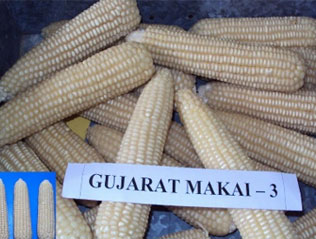
Gujarat Maize-3
(1999) released for cultivation in Agro Climatic Zone-III for rainfed kharif season (Middle Gujarat) ) (Average Yield : 5500 kg/ha)
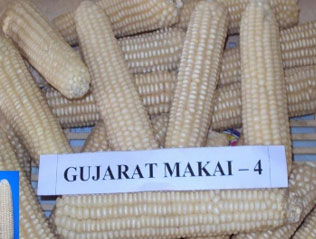
Gujarat Maize-4
(2000) released for cultivation in Agro Climatic Zone-III for rainfed kharif season (Middle Gujarat) ) (Average Yield : 2900 kg/ha)
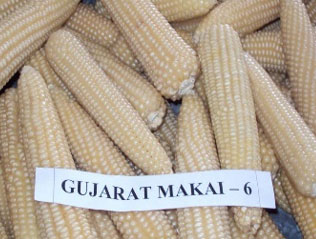
Gujarat Maize-6
(2002) released for cultivation in Agro Climatic Zone-III for rainfed kharif season (Middle Gujarat) ) (Average Yield : 3200 kg/ha)

Narmada Moti (2002)
released for cultivation in Agro Climatic Zone-III for rainfed kharif season (Middle Gujarat) ) (Average Yield : 4200 kg/ha)
Release of Hybrids at State Level :
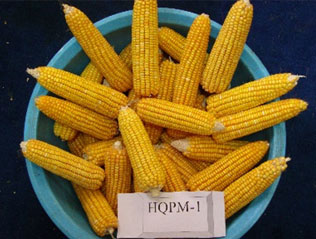
HQPM-1 (2011) released for cultivation in Agro Climatic Zone-III and IV for rainfed kharif and rabi season (Middle & North Gujarat) (Average Yield : 5500-6000 kg/ha)
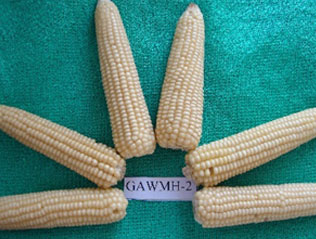
GAWMH-2 ,
Gujarat Anand White Maize Hybrid-2 (2012) released for cultivation in Agro Climatic Zone-III for rainfed kharif season (Middle Gujarat) (Average Yield : 4500 kg/ha)

GAYMH-1,
Gujarat Anand Yellow Maize Hybrid-1 (2013) released for cultivation in Agro Climatic Zone-III and IV for rainfed kharif season (Middle & North Gujarat) (Average Yield : 4200 kg/ha)
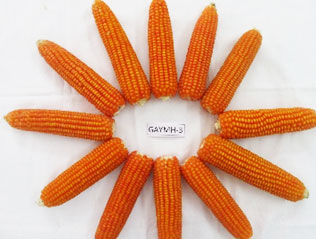
GAYMH-3,
Gujarat Anand Yellow Maize Hybrid-3 (2018) released for cultivation inMiddle Gujarat Agro Climatic Zone for rabi season (Average Yield : 6656 kg/ha)

GASCH-11,
Gujarat Anand Sweet Corn Hybrid- 11 (2019) released for cultivation in Middle Gujarat Agro Climatic Zone for rabi season (Average Yield : 13273 kg/ha Green cob yield)

GAPCH-21,
Gujarat Anand Pop Corn Hybrid- 21 (2019) released for cultivation in Middle Gujarat Agro Climatic Zone for rabi season (Average Yield : 3669 kg/ha)
Release of hybrids at National level :
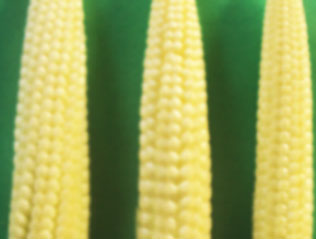
GAYMH-1,
Gujarat Anand Yellow Maize Hybrid-1 (2018) Released for kharif cultivation in the PZ (Peninsular zone ) and CWZ (Central West Zone) (Average Yield : 2300 kg/ha baby corn yield without husk)

IHPC-1203
(Popcorn hybrid) (2019) released for kharif cultivation in the NWPZ (North West Plain Zone-Punjab, Haryana, Delhi, Uttarakhand, Uttar Pradesh), NEPZ (North East Plain Zone-Bihar, Jharkhand, Odisha, Uttar Pradesh (Eastern region), West Bengal) and PZ (Peninsular zone- Maharashtra, Karnataka, Andhra Pradesh, Tamil Nadu). (Average Yield : 3294-4922 kg/ha)
Crop Production:
- The maize growing farmers of Middle Gujarat Zone – III (AES-II) are advised to give total 7 irrigations each of 60 mm in rabi season after one post sowing irrigation. When the irrigation is scares, apply second irrigation at 24 DAS after sowing and remaining 5 irrigations at 15 days interval gives maximum net return of Rs. 11787 /ha. (2007)
- The farmers of middle Gujarat agro-climatic zone-III (AES-III) growing maize (cv. GM-3) are advised to apply 120 kg N + 60 kg P2O5 per ha and irrigate at 1.0 IW/CPE ratio (total 7 irrigations each of 60 mm depth) in rabi season for securing higher yield and net return. First irrigation should be given at the time of sowing. Second at 6 DAS and remaining 5 at 20 days interval. (2008)
- The farmers of middle Gujarat Agro-climatic Zone – III (AES-II) growing rainfed maize cv. GM-4 in kharif season are advise to make ridging at 2 metre across the furrow after sowing of maize for securing higher yield (3444 kg ha-1 ) with net return of 24256.00/ha with CBR 1:2.86. (2010)
- The farmers of middle Gujarat Agro Climatic Zone III (AES-II) growing sweet corn (Madhuri variety) in rabi season are advise to fertilizer the crop with 2 Ton vermin compost + 1.2 Ton castor cake/ha with 90 kg N + 45 kg P2O5 for high green cob yield with high net return. (2014)
- The farmers of middle Gujarat zone III (AES-II) growing rainfed maize hybrid GAYMH-1 or GAWMH-2 in panchmahal District are advice to fertilize the crop with 160 kg N2 and 20 kg P2O5 per hector for securing higher grain yield with higher net return. While the farmers of Dahod District are advise to fertilize the crop with 160 kg N2 and 60 kg P2O5 per hecter for securing higher grain yield with higher net return. The Nitrogen application will be done in 4 equal split at basal, at 4 leaf, at 8 leaf and at tasseling stage of crop growth. (2017)
Plant Pathology:-
- Farmers of the middle Gujarat growing rabi maize are advised to treat the maize seeds with Captan (@ 3 g/kg seed) at the time of sowing coupled with four sprays of Carbendazim 12% + Mancozeb 63 % @ 0.2%, first spray at 40 DAG and remaining three sprays at 15 days interval of the first spray for effective and economical management of Turcicum leaf blight disease. (2010)
- Treat the seed with thiram 3 g/kg seeds followed by two sprays of trifloxystrobin 25% + tebuconazole 50% (0.05%) at 30 and 45 days after germination was found significant control of banded leaf and sheath blight (BLSB) disease severity (2015-16)
Entomology:
- Higher grain yield (1923 Kg/ha) with lowest per cent of dead heart (4.0%) was recorded in plot where egg parasite Trichograma chilonis released 7 DAG followed by neem seed kernel spray (5.0%), 10-12 DAG and then after 2nd release of egg parasite Trichograma chilonis 15 DAG. (2010)
- Apply whorl application of carbofuran 3 G @ 10 kg/ha two times at 30 and 40 days after germination for the effective and economical management of stem borer. (2016-17)

